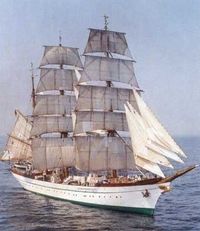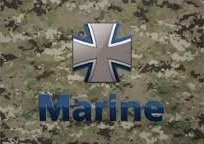Great Slave LakeEast Arm
The Great Slave Lake is the second-largest lake in the Northwest Territories of Canada (behind Great Bear Lake), the deepest lake in North America at 614 m (2,015 ft), and the ninth-largest lake in the world. It is 480 km (298 mi) long and 19 to 109 km (12 to 68 mi) wide. It covers an area of 28,400 km² (11,000 sq mi) in the southern part of the territory. Its volume is 2,090 km³ (501.7 cu mi,1.694 billion acre feet). The lake was named for the Slavey North American Indians.
The Hay and Slave Rivers are its chief tributaries. It is drained by the Mackenzie River. Though the western shore is forested, the east shore and northern arm are tundra-like. The southern and eastern shores reach the edge of the Canadian Shield. Along with other lakes such as the Great Bear and Athabasca, it is a remnant of a vast post-glacial lake.
The East Arm of Great Slave Lake is filled with islands. The Pethei Peninsula separates the East Arm into McLeod Bay in the North and Christie Bay in the south. The only community in the East Arm is Lutselk'e (former Snowdrift), a hamlet of about 350 people, largely Chipewyan aboriginals of the Dene Nation.
The East Arm of Great Slave Lake is filled with islands and stunning scenery, including soaring cliffs and rushing rivers.The Lake is partially on the edge of the Canadian Shield and partly on the Interior Plateau (the north end of the Great Plains). The lake is cold and very deep; at 616 metres (2,027 feet), it is the sixth deepest in the world. The northern shore of Great Slave Lake laps against the 4 billion year old rock of the Slave geological province. A mere 8,000 years ago, the last glaciers flowed out of the Arctic to scour off all vegetation and soil right down to bedrock. Ice three miles thick poured off the edge of the granite shield and plowed down into the much softer sedimentary rock of the interior plains scooping out an enormous trough 2000 feet deep to create Great Slave Lake
The History
First Nations were the first settlers around the lake, building communities including Dettah, which still exists today. Alexander MACKENZIE found the outlet in 1789,but
British fur trader Samuel Hearne explored the area in 1771 and crossed the frozen lake, which he initially named Lake Athapuscow (after an erroneous French speaker's pronunciation of Athabaska).Arround 1930s, gold was discovered, which led to the establishment of Yellowknife, the today's territory's (NWT) capital.
In 1967, an all-season highway was built around the north side of the lake, originally an extension of the Mackenzie Highway but now known as Highway 3. The earliest settlements in the area were Hudson's Bay Co posts: FORT RESOLUTION, Fort Rae (now RAE-EDZO), FORT PROVIDENCE and FORT RELIANCE..
The mining of the huge lead-zinc deposits southwest of the lake from 1964-1988 began after the completion of the Great Slave Lake Railway to Hay River and Pine Point and the construction of a hydroelectric plant on Taltson River. A prosperous commercial fishery centered on the Hay River dates from 1945; the chief catch is whitefish.
Little ORCA in the East Arm
The lake is at least partially frozen during an average of 8 months of the year. During winter, the ice is thick enough for Semi-trailer trucks to pass over. Until 1967, when an all-season highway was built around the lake, goods were shipped across the ice to Yellowknife, located on the north shore. Goods and fuel are still shipped across frozen lakes up the winter road to the diamond mines located near the headwaters of the Coppermine River, Northwest Territories. A ferry is required to access Yellowknife during spring when the ice is not present in a solid sheet along Highway 3 where it crosses the Mackenzie River.
In the East Arm
Lutselk’e
Lutselk’e is located on the East Arm of Great Slave Lake at 62°24’N and 110°44’W, 201 air km east of Yellowknife.The community of approximately 300 people is located on the southeast shore of Great Slave Lake. On July 1, 1992 the unorganized settlement of Snowdrift, N.W.T., officially changed its name to Lutselk'e. This Chipewyan name has remained in common use despite the existence of an English-language name. Lutselk'e means "place of the Lutsel" (a small fish) and has been used for generations.
Frontier Fishing Lodge. Located in Canada's Northwest Territories, the lodge is located on the east arm of the Great Slave Lake, 120 air miles east of Yellowknife, close to Lutsel K'e, a Dene Village. A place known the world over for Canada lake trout fishing, arctic grayling, whitefish, and Canada northern pike fishing.
Safe Catch and Release Fishing
As the number of anglers increases in Canada, the continuation of our high quality sport fishing depends upon more people practicing safe catch and release fishing.
While it’s important to provide great fishing opportunities for all, it’s equally important to assure the conservation of Canada’s stocks of fish. When you harvest only those fish you will use and release the rest of your catch unharmed, everyone benefits.
As a result of this, catch and release incentive program has been implemented on a voluntary basis to help enhance the trophy lake trout fishery and northern pike fishing stock. The use of barbless hooks is mandatory.
When you effectively practice and use catch and release techniques, you’re also assuring that your fish will be in the best possible physical condition when released back into the waters.
Somewhere in the East Arm of the Great Slave Lake
That was a really nice anchorage
At Pt Busse
Very high vertical Cliffs
This was one of the highlights of the East Arm
A New National Park for Great Slave Lake?
In October of 2002, when the Canadian federal government announced their plans to create 10 new national parks across the country, the proposed expansion list included the East Arm of Great Slave Lake.
The selection of the rugged region, with its cold, clear waters and archipelago of rocky islands, is not an entirely new idea: more than 7,000 square kilometers of crown land in the area have been “withdrawn” (protected from industrial development) by the federal government since 1970. In 2001, the Lutsel K’e Dene Nation and other members of Akaitcho Treaty No. 8 indicated their willingness to consider the designation of a park within their territorial area. The decision process will include extensive consultation with Elders concerning the traditional and spiritual activities associated with the East Arm region.
Vortex Cove
Our anchorage in The " Vortex " cove
Mike Lynagh ,Louis Batony,Dwane Williams,Pierre Lebel. Thanks for all the fun guys...
I'm Diving in the cove
The freediver system works great, with the full mask... We where searching the cove for a lost bottle of whiskey, to bad we never found it...
Thank god I had the full Mask....
Old Fort Reliance
Orca at old Fort Reliance
The East Arm of Great Slave Lake is a land of spectacular beauty. Native people have lived and hunted here for thousands of years. Over the last two centuries the area, as the entry to the Barrengrounds, has drawn explorers from other parts of the globe. They, too, have contributed to the rich history of Great Slave Lake and its environs. One of the best preserved sites of early exploration in the western Subarctic is Old Fort Reliance. It was originally erected in 1833 as winter headquarters for the Arctic Land Expedition, led by George Back, R.N. His party travelled by way of the Back River (formerly the Thlew-ee-choh-desseth or Great Fish River) to the Arctic Coast in an effort to locate the missing John Ross expedition and conduct scientific studies.
A fort in name only, Fort Reliance consisted of a main house and smaller houses, heated with chimneys constructed of stone and clay. An observatory for scientific work was also built here.Today all that remains are the chimneys, storage pits, and the outlines of the log buildings in the earth.
The Prince of Wales Northern Heritage Centre, in conjunction with Parks Canada, has studied the site and carried out a programme to stabilize and preserve the falling chimneys. There is still much to be learned from this site. These fragile remains are protected from disturbance by the Northwest Territories Archaeological Sites Regulations.The final episode of construction at the fort was by an American hunter, named Buffalo Jones who raised a log cabin in 1897, incorporating one of the chimneys into the structure
Nice place to anchor
An inukshuk
Must have been a nice place in the old times
All there is left from the fort are the chimneys
That was for sure a lot of work
Next:Great Slave Lake 2
Only those who risk going too far, will discover how far they can go!
Expedition in USA, Alaska & Canada, Scandinavia with folding boat, motorboat, catamaran, motorcycle, off-road vehicle, bicycle ...




























